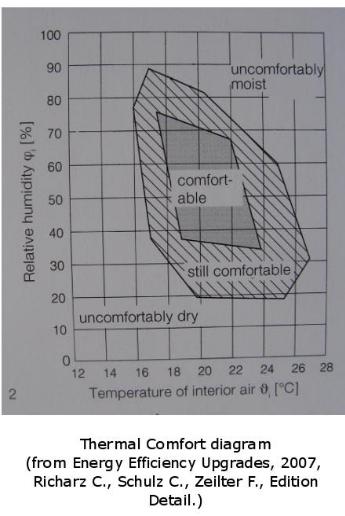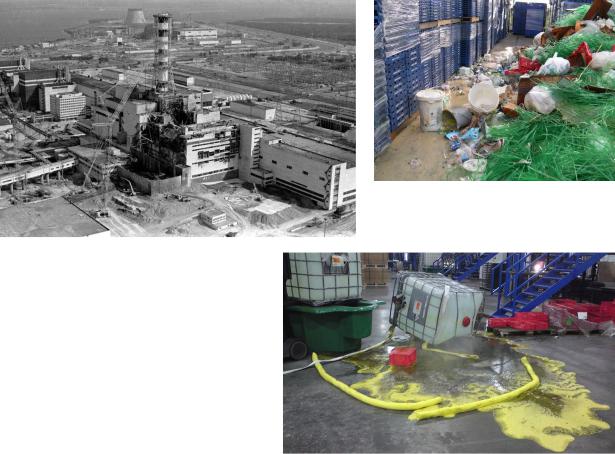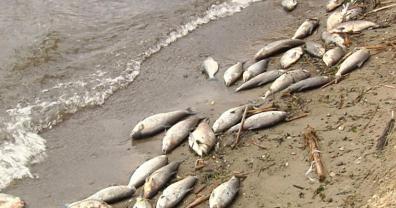
9461
.pdf
|
sonal protective equipment (PPE) |
3. air velocity |
c. the temperature of the air surrounding the |
|
body |
4. humidity |
d. the heat that we produce inside our bodies |
|
as we carry out physical activity |
5. clothing insulation |
e. amount of water in the air |
6. metabolic heat |
f. the heat that radiates from a warm object |
B. Fill in the gaps with the words and word combinations from task A.
A general recommendation is that the ___________ should be held constant in the range of 21-23°C.
When relative ___________ is kept at about 50%, office workers have fewer respiratory problems (specifically in the winter) and generally feel better. Higher _____________
makes the office feel "stuffy". More important, it can contribute to the development of bacterial and fungal growth.
___________ lower then 50% can cause electrostatic charge on both office equipment and their users. Moreover, it can contribute to skin rashes.
____________ below 0.25 metres/second does not create any significant distraction even in tasks requiring sustained attention.
Reading
A. Before you read the article, discuss the question with a partner:
- What measures can you take to control thermal comfort?
B. Read the article and check if your suggestions were right.
How to assess thermal comfort
Calculating thermal comfort

In legislation, there is no single value for the maximum temperature to which you can be exposed at work. Of course, some temperature and relative humidity combinations cause discomfort. However, in some situations, exposure to excessive heat can lead to heat stress that could lead to heat exhaustion, fainting, heat stroke, and other conditions which should be addressed.
You cannot simply ‘measure’ thermal comfort with a thermometer. For example, a normal or ‘dry-bulb’ thermometer in a workplace may read 21°C but if humidity is high, people are likely to feel uncomfortable unless some form of air-cooling or ventilation is provided. An acceptable zone of thermal comfort for most people in the UK lies roughly between 13°C and 30°C, with acceptable temperatures for more intensive work activities concentrated towards the bottom end of the range, and more sedentary activities towards the higher end. However, you may wish to measure the factors contributing to thermal comfort more accurately. The predicted mean vote (PMV)* and percentage of people dissatisfied (PPD)* index and use of BS EN ISO 7730 and BS EN ISO 10551 British standards are recommended.
DO YOU KNOW?
British (BS), European (EN) and International (ISO) standards relevant to working in thermal environments
BS EN 7730 Moderate thermal environments – Determination of the PMV and PPD indices and specification of the conditions for thermal comfort
ISO 10551 Ergonomics of the thermal environment – assessment of the influence of the thermal environment using subjective judgment scales
The PMV/PPD index predicts the thermal comfort of people working in a given environment. It uses the six basic factors, and has become the most widely used index in recent years. It has been adopted as a British and European and International standard.
Controlling thermal comfort
There are a number of ways that you can manage thermal comfort in the workplace:

1. __________________________
This type of controls include planning and rescheduling work times and practices and rest schedules, for example, scheduling ‘hot’ work for cooler times of day or giving workers flexible hours to help avoid the worst effects of working in high temperatures.
These controls are generally of a short term, temporary nature and are also widely recognised as being more expensive and less cost-effective than engineering controls in the long-term.
2. ____________________________
These should be the first choice to reduce or eliminate the hazard. Although the initial cost of such controls seems high, it has been found that the implementation cost is often offset by the resulting improvements to production and decrease in downtime, with reduced absenteeism and improved motivation.
Heating
Air movement
Air conditioning
Evaporative cooling
Thermal insulation
It is important to stress that any practical solution to controlling thermal comfort is likely to require a combination of different options alongside consultation between employers, employees and their representatives.
predicted mean vote (PMV)* индекс комфортности по Фангеру (ожидаемая средняя оценка степени комфорта)
percentage of people dissatisfied (PPD)* ожидаемый процент неудовлетворенных степенью комфорта
C. Read the text again and match the subheadings with paragraphs 1. and 2.
* administrative controls * engineering controls
Vocabulary II

Look through the text and fill in the diagram of word combinations with air and heat.
cooling
air
heat
stress
Pronunciation
A. Underline the stressed syllable.
temperature, respiratory, exhaustion, sedentary, absenteeism, evaporative, accurately
Speaking
Many studies have revealed that the thermal environment in the classroom will affect the ability of students to grasp instruction. Herrington found that temperatures above 80 degrees Fahrenheit (°F) (26.6 degrees Celsius (°C)) tend to produce harmful physiological effects that decrease work efficiency and output. Peccolo noted that ideal thermal classroom environments had an effect on the mental efficiency of students.
Compare the thermal comfort in different buildings and in different rooms of our campus? How does this environment affect you? What can be done about it? Work in pairs and then report your ideas to the rest of the class. You can use the following adjectives: humid, stuffy, dry, uncomfortable, comfortable, hot, warm, cool, cold, evaporative etc.
UNIT V
INDUSTRIAL ACCIDENTS
Starting up

Can you guess what is depicted in the pictures? What do you think caused these disasters? Have such accidents ever been in your place? What have they affected?
Industrial accidents are mass disasters caused by industrial companies, either by accident, negligence or incompetence.
Vocabulary
A. Read the English words and match them to their Russian equivalents.
1 |
gas emission |
a халатность |
2 |
workspace lighting |
b внешняя причина |
3 |
negligence |
c авария, повреждение |
4 |
chemical spills |
d освещенность рабочего места |
5 |
failure |
e температурное воздействие |
6 |
external cause |
f утечка химикатов |
7 |
temperature exposure |
g чрезмерный шум |
8 |
slippery flooring |
h выделение газа |
9 |
excessive noise |
i скользкий настил, покрытие |
Reading
A. Read the text and the statements after it and say if they are true or false.
Approximately 120 million industrial accidents occur in the work place
worldwide each year.
Approximately 210,000 of these accidents result in fatality. The industries which have the highest rate of accidents are the mining, construction, transportation, and agricultural industries. Construction accidents account for fifteen percent of all accidents and thirty percent of all fatalities in industrial work environments.
Causes of industrial accidents can be broken down into two broad categories: unsafe conditions and unsafe acts. The causes of industrial accidents because of unsafe conditions can include insufficient workspace lighting, excessive noise, slippery flooring, extreme temperature exposure, inadequate protection when working with machinery or hazardous materials, unstable structures, electrical problems, and more.
The causes of industrial accidents that involve unsafe acts can include actions or failures to act which result in injury. This can be a result of employee negligence.
The causes of industrial accidents can occur in the environment around the workplace (external) or within the work environment (internal). External causes of industrial accidents may include fires, chemical spills, toxic gas emission or radiation. The causes of industrial accidents in these cases might include organizational errors, human factors, abnormal operational conditions, natural forces, software failures, and outside interference.
Internal causes of industrial accidents can involve equipment, harmful materials, toxic chemicals, and human error.
1.Industrial accidents happen rather seldom in the world.
2.Half all the industrial accidents result in fatality.
3.Construction is the leading area for industrial accidents.
4.There are three types of causes of industrial accidents.
5.Toxic gas emission is the example of external cause of industrial accident.
Vocabulary II Word building

A.Use the correct form of these words from the text to complete the first two columns.
Noun |
Adjective |
Opposite |
|
1 negligence |
………… |
………... |
|
2 |
……….. |
conditional |
unconditional |
3 stability |
………… |
………... |
|
4 safety |
………… |
………... |
|
5 hazard |
………… |
………... |
|
6 |
……… |
fatal |
vital |
7 |
………. |
………... |
inadequate |
8 sufficiency |
sufficient |
………… |
|
9 norm |
normal |
………… |
|
B.Opposite meanings of the adjectives above are formed in one of two ways:
a)using a prefix un-, in-, ab-; for example, conditional, unconditional.
b)using a different word; for example, fatal, vital.
Complete the right-hand column of the chart with opposites of the adjectives.
C. Use one of the adjectives or its opposites to complete the following sentences.
1.Local environmentalists have criticized the fact that …conditions still exist at the plant even after three years of clean-up work.
2.Computer system users cannot control risk management decisions, but suffer big losses when …protection fails to avert catastrophe.
3.The workman had to prove that the employer had been ….
4.He has been caught in a machine, or some part of a machine has suddenly broken, with … results.
5.The Labour party believes that there are a number of essential approaches to toxic and …waste.
6.The poison was … to destroy the rat colony.
Pronunciation
A. Put the words from the box in the correct column, according to the pronunciation of the letters in bold.
fatality forecast catastrophe heater avert plant threaten attention failure
decrease disadvantage charity dead installing disaster |
leak carbon |
acid fall |
||||||
escape immature challenge claim attempt asthma |
|
|
|
|
||||
as in |
as in |
as in |
as in |
as in |
|
as in |
|
as in |
hand |
part |
take |
tall |
mean |
|
health |
|
about |
Reading II

A. Before you read this article about an industrial accident, discuss these questions with a partner:
-What are the worst kinds of pollution in your country?
-Should we manufacture chemicals which can kill people or pollute the environment?
DISASTER ON THE RHINE
A fire at a chemical in
Basel, Switzerland, led to one of the worst ecological disasters of the last ten years. Poisonous chemicals, including deadly mercury compounds, were
released into the River Rhine following a warehouse fire at the huge Sandos complex, just north of the city of Basel. The water near the factory turned pink, and scientists soon realized that a major ecological disaster had occurred. Within days, thousands of fish were found dead on the shores of the Rhine as the chemicals flowed slowly downstream through West Germany.
Analysis of the water showed that there was danger to human life as well as to fish and plants. Towns and villages near the Rhine had their drinking water delivered by tanker for over a week.
Further down the Rhine, the Dutch authorities could do nothing to stop the chemicals reaching their waters. They hoped that there would be no longterm damage to fish in the North Sea itself, but no one was sure what the effect would be.
Meanwhile, Sandos conducted a full inquiry into the accident. At a press conference, there were angry scenes when protesters threw poisoned Rhine water at representatives of the Swiss pharmaceutical company.
B.Answer the questions about the article.
a. Why did the chemicals flow into the River Rhine?

b.What were the effects on fish in the river?
c.What happened to the drinking water of towns and villages near the river?
d.What did the Dutch authorities do?
e.What did Sandos do?
f.What did the protesters do?
C. Look at the first paragraph of the article. Find words which mean:
1 very big …….
2 happened …….
3 catastrophe ……..
4 river banks ……
5 towards the sea ……
D. Look at the last two paragraphs. Find words which mean:
6 investigation ……..
7 people with power to make decisions …….
8 certain ……
9 permanent ………
Grammar
The Passive
|
Simple |
Continuous |
Perfect |
|
||
Present |
am |
|
am |
|
have |
|
|
is |
written |
is |
being written |
has |
been written |
|
are |
|
are |
|
|
|
Past |
was |
|
was |
|
had been written |
|
|
were |
written |
were |
being written |
|
|
|
|
|
|
|
||
Future |
will be written |
|
|
will have been written |
||
|
|
|
|
|
|
|
A.Look at the sentences and answer the questions: a. Car fumes pollute the air.
b.The air is polluted.
c.Ten people were injured.
d.Employee negligence causes accidents.
e.Accidents are caused by employee negligence.
1)In which sentences the subject is ‘the doer’ of the verb?
2)In which sentences the action is more important than the ‘doer’?
3)What sentences are with active/passive verbs?
B. Now complete the rules about the passive voice:
We form the passive with _____+________ of the verb.
We use ______(active/passive) when what happened to the person or thing is more important than the ‘doer’.
We use ______ (active/passive) when the ‘doer’ of the verb is not known or not important.
We can show ‘who did it’, using ______.
C.Find examples of the passive in the text.
D.Work in teams. Following the model, write your own general knowledge quiz or test each other on your speciality.
|
was composed/painted in…by… |
is/are made of… |
|
|
was discovered/designed in…by… |
is/are caused by… |
|
|
was built/started/completed in…by… |
is/are used… |
|
|
|
|
|
Mod- |
|
el: |
|
The European Agency for Safety and Health at Work was set up in
a) Italy b) Spain
What type of extinguisher is used in case of fire with electrical risks?
a)dry powder b)water
E. Work in pairs. In turn read instructions and make reports, using the passive and words of time in brackets.
Example: build a garage (last month) - It was built last month.
